11 Ways to Include your Dog in Your Wedding, Without Your Dog
When I was planning my wedding around this time last year, I hemmed and hawed over including my beloved French Bulldog, Huggs. I’ve known him longer than my husband and he’s been there for me every step of my last 7 years, so there was no doubt I wanted him included, but the reality was it just didn’t make sense.
We traveled for our wedding and then headed out immediately for our honeymoon, but most importantly, the venue, an old house, with open doors to city streets, simply didn’t feel like a safe choice for a curious bulldog. Add these concerns to a dog who likes to eat things off the ground and who talks loudly when being ignored and has general anxiety over new things, my husband and I decided it would probably be best if Huggs stayed at home. But just because Huggs wasn’t there in person, didn’t mean he couldn’t be there in other meaningful ways.
Here are the 7 ways we incorporated Huggs into our big day:
1. We played this video for our guests at the cocktail hour. Since it was filmed ahead of time and at our house Huggs was a co-star. His debut happens in the middle of the video (around the 2 min mark and again at 3 min) for those who are just here to see the dog.
2. Wedding Website – Wedding websites are a great way to inform your guests about the day’s events, but are also a great opportunity to let guests know a little more about the bride and groom and things that are important to them. We included all of the traditional items, our story, about us, about the day and photos of us, but we were sure to give Huggs a special gallery all his own.
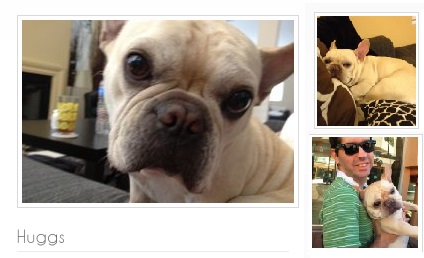
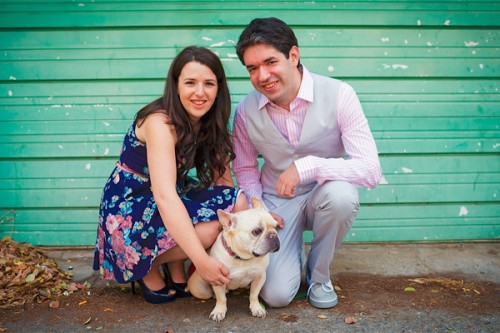
5. Marriage Contract – In Jewish weddings it is traditional to sign a ketubah, a Jewish wedding contract. It is signed before the wedding and then displayed during the event and is ultimately hung in your home. who offers beautiful options featuring unique and custom artwork. We selected one of the pieces already offered, but had them add in a couple special changes; one of which was a drawing of Mr. Huggs sitting on the hills of our Dr. Seuss-inspired ketubah.
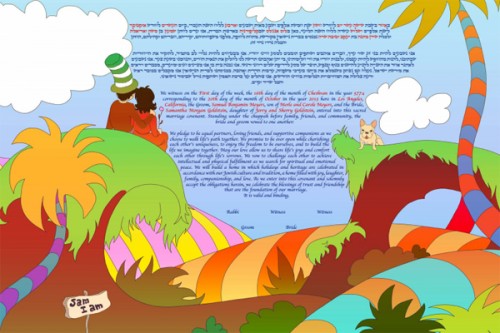
7. Cake Topper – Cakes and toppers have become more elaborate over the years, allowing brides and grooms to express their interests, passions and personalities. It’s a great place to add in a nod to your dog! I made our cake topper using clay, but there are plenty of places to order custom options if you don’t have the time to be crafty.
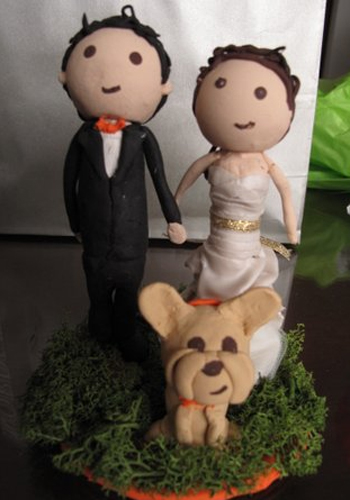
8. Include your dog in the invitations, save the dates or other paper goods like place cards, napkins and table numbers.
9. Theme your cake around your dog or include him in the design
10. Create a memorable wedding favor featuring your dog or give a gift that other dog-lover’s would enjoy
11. Create a dog-inspired cocktail to be served, if we had thought of this, we would have called ours the “Warm Hugg.”
With all these things added up, your dog can play a bigger part in the day then if he had walked down the aisle. Huggs got all the recognition he deserved while safe, sound and likely happier getting his snooze on at home.
Health Problems With American Eskimo Dog
Luxating Patella
One medical condition that occasionally affects American Eskimo dogs is patellar luxation. This applies to all of the size groups — toy, miniature and standard. Patellar luxation describes issues with the exact location of a canine’s kneecap. When dogs have luxating patellas, their kneecaps essentially spring out of the appropriate spot. Patellar luxation is prevalent in wee and big dogs alike. If you observe anything unusual in your American Eskimo’s back legs, set up a veterinarian appointment immediately, the sooner the better. You also might notice your pet making conspicuous hopping motions as he tries to move around. Orthopedic difficulties of the back legs in general are somewhat common in American Eskimo dogs, so pay attention for any signs of them.
Progressive Retinal Atrophy
Eye issues such as progressive retinal atrophy also can affect these nimble doggies. The genetic retinal ailment progresses gradually, and with time causes blindness. If a dog has progressive retinal atrophy, either his retina ceased normal growth at too early of a stage, or his photoreceptors deteriorated at an abnormally quick pace. Progressive retinal atrophy isn’t only common in the American Eskimo breed, but also in many others such as toy poodles, Australian cattle dogs, Siberian huskies and Irish setters. If you are concerned that your precious pooch might be experiencing eyesight problems, take him to the vet immediately.
Hip Dysplasia
Hip dysplasia is another orthopedic concern that American Eskimo dogs sometimes experience. Hip dysplasia, in a nutshell, is a genetic ailment that is characterized by a hip joint that simply developed in an abnormal fashion. This leads to looseness of the joint and ultimately excessive motion of the bone in the legs. Some key symptoms of hip dysplasia in pooches are rigidness, hobbling and reluctance to partake in physical exercise or walk on stairs. If you have any reason to suspect that your precious pet might be dealing with this painful issue, bring him to the vet as soon as possible.
Diabetes
Diabetes also sometimes affects American Eskimo dogs. If a doggie has diabetes, then his body either doesn’t make sufficient insulin or doesn’t react correctly to the hormone. Be alert to signs of diabetes in canines, such as excessive urination, hazy eyes, weight loss, throwing up, exhaustion, increased hunger, dehydration and inordinate thirst. Veterinary assistance is a must for any dog who has diabetes, so don’t wait around.
Robust Dogs in General
Despite these possible medical issues, American Eskimo dogs are, on the whole, fairly robust and tough dogs. With the right care, exercise and diet, they can live happily for anywhere between 12 and 17 years. Routine appointments with the veterinarian are a must, even if your pet seems to be in 100 percent glowing condition.
DIY Dog Tear Stain Remover
Thoroughly mix equal parts corn starch, milk of magnesia, and hydrogen peroxide to make a creamy paste. The amount you will need depends on the size of your dog, but about a teaspoon each should be enough to get you started.
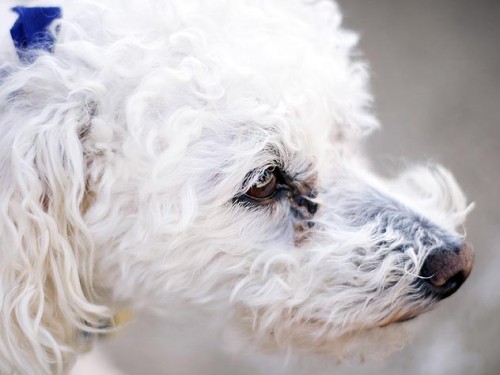
Keep your dog’s head still, and let the paste stay on his fur for ten to twenty minutes, then wash it out thoroughly. You may want to condition the bleached fur after this process, as it may be brittle. You can repeat this process, as necessary, every couple of days until the stains are removed.
If you cannot easily keep your dog still for the ten to twenty minutes needed for the solution to work, do not risk this method as the solution could get in your dog’s eyes.
Dog-Friendly Cucumber Dip
We all love veggies and dip and your dog will too! Check out this refreshing, healthy and super easy recipe you and your dog can both enjoy. Cucumbers are a good source of vitamin K and yogurt is great for your dog’s digestive system. As with any treat, you will want to feed in moderation, especially if it’s your first time feeding a particular snack.
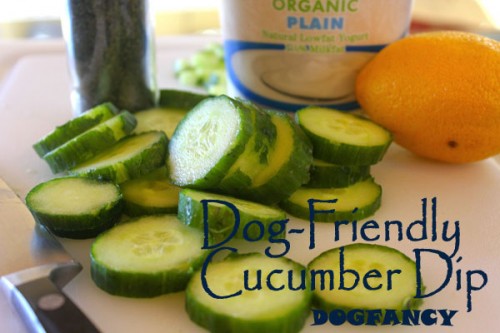
1 medium cucumber, or 1/2 hothouse cucumber
1 1/2 cups of yogurt (plain, unsweetened)
1 tbsp fresh dill or 1 tsp dried dill
1/2 lemon (squeezed)
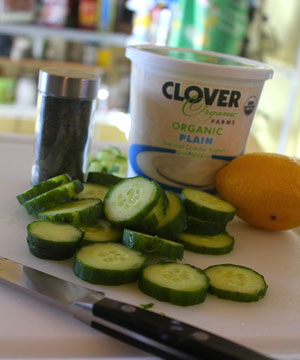
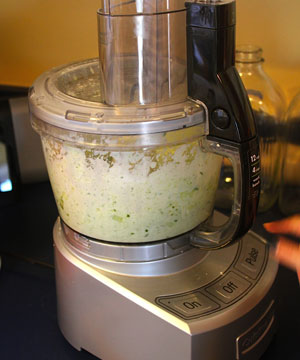
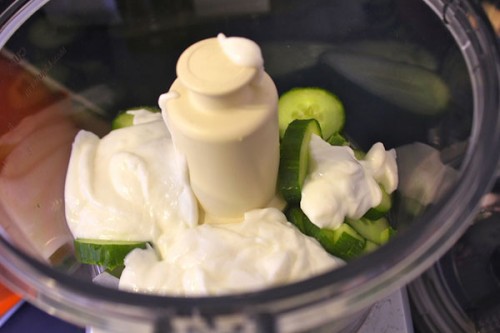
Slice up your cucumbers. If you are using cucumbers with a thicker skin, make sure to peel them before slicing.
Place cucumber in food processor with 1 cup of yogurt, lemon juice and dill.
Blend until cucumber is small and well-blended with other ingredients
Mix in additional 1/2 cup of yogurt
Place in a small bowl and put in refrigerator to set. The dip will thin once it is blended, so it is important to let it rest in the fridge for at least an hour and overnight if possible.
**If you are looking for a thicker dip, place your cucumbers in the food processor alone and then strain them in a cheese-cloth to pull out the extra liquid before mixing them with the yogurt.
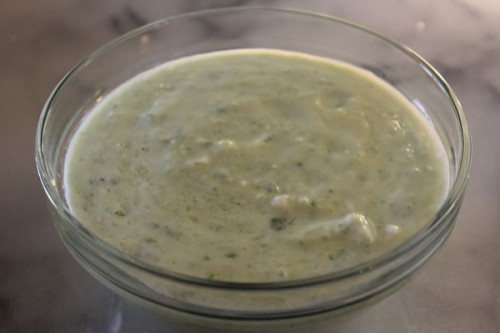
Good Water Dog Breeds
Water Retrievers
Today’s flat-coated retrievers and Labrador retrievers used to work as fishery dogs, retrieving fish and other objects from the water. Labradors helped to pull small fishing boats. With improvements in firearms, however, hunters shot birds in flight and needed dogs to find and retrieve fallen birds. As the fishery dogs were efficient swimmers and natural retrievers, they were crossed with pointers, setters and other retrievers to hone their bird skills. Other water retrievers include the tough and curly coated Chesapeake Bay retrievers, that navigated the chilly waters of the Chesapeake Bay to retrieve birds. American water spaniels and Irish water spaniels continued to be bred mainly for hunting, and are now rare compared to other water dog breeds. A surprising member of this group is the standard poodle. Poodles were bred in Germany as water retrievers, and their salon style hairdos, originally helped them in the water. The close clip made swimming easier, but the poodles’ coats were left longer on their chests for warmth and around their joints and tail tips for protection.
Pied Pipers of the Shoreline
Nova Scotia duck tolling retrievers have webbed feet and are powerful swimmers. They were developed in Canada in the 19th century as decoys. The dogs would chase sticks and play along the shore, sometimes disappearing from view and then reappearing — an activity called tolling. Their antics lured the curious waterfowl closer to the shore and into waiting nets or within shooting range. The dogs also retrieved fallen birds from the sea. These high-energy, playful dogs make great pets, but they need long walks and a daily play session.
The Fisherman’s Friend
Portuguese water dogs have long, curly waterproof coats, webbed feet and can work all day. They were once found all along Portugal’s coastline, herding fish into nets, retrieving lost equipment from the sea and taking messages between ships and back to shore. In the early 20th century the dogs started to disappear, along with traditional fishing methods. A wealthy Portuguese shipping magnate saved the breed and these robust water dogs arrived in the United States in the 1950s. The Portuguese Water Dog Club of America has created water trials — modern day water work activities — to help develop and promote the breed’s historical water abilities.
Heroes and All-Purpose Dogs
The massive Newfoundlands, with their heavy black or brown coats, large webbed feet, powerful hindquarters and well-developed lungs cope easily with long distance swimming, even in the coldest conditions. They were developed in Newfoundland as all-purpose dogs. They rescued people from drowning, carried lifelines to ships in trouble and helped fishermen, by hauling their heavy fishing nets through the cold sea. Back on land, Newfoundlands pulled carts and acted as pack horses and still serve as draft dogs today. Newfoundlands can also be found patrolling beaches in Britain, France and Italy, where they continue to save lives. The Newfoundland Club of America in 1973 started a program of water tests comprised of exercises designed to develop and demonstrate the Newfoundlands’ instinctive lifesaving abilities in the water.
How to Know the Right Time to Put Your Dog Up for Adoption
People put their pets up for adoption for any number of reasons. It’s easy to assume these reasons are selfish, but sadly some are forced to re-home their four-legged friends because they’ve lost their jobs and homes, or because disability renders them unable to care for their animals. It’s never an easy decision to surrender a pet, but sometimes it’s the right thing to do. Have a question? Get an answer from a Vet now!
A Tough Call
Having a dog is a great responsibility. Dogs rely on their owners for more than just playing fetch and affection. They need shelter, food and veterinary care. When owners are scrambling to provide their dogs with the basics and find themselves slipping on annual vaccinations, it’s time for them to consider making a difficult choice. Re-homing your best friend may be the most difficult thing you have to do, but you will ultimately be fulfilling your promise to ensure his safety and well-being.
Time Is of the Essence
Regardless of the reason, those looking to put their dogs up for adoption must leave themselves plenty of time to take the necessary steps to ensure their pets end up in safe, loving homes. Re-homing a pet requires more than just a few days, a couple of weeks and even a month. Time is needed not only to find someone willing to take in a new dog, but also to check that person’s background and references. Give yourself at least two months.
Rescue Organizations
The first thing to do is check out local rescue organizations. Even if they are overwhelmed and cannot immediately take your pooch and put him in a foster home, they might be able to help spread the word about your situation. Of course you can advertise your dog online without any help, but rescues can save you time in dealing with respondents. They have experience weeding out puppy mill owners and others whose intentions for adoptable dogs may be less than stellar.
No-Kill Shelters
People who are trying to re-home their dog should also check out no-kill shelters, even if they aren’t nearby. Shelters are usually overwhelmed, but may still be able to help. If a no-kill shelter is far away, there are transportation services available. Rescue organizations or sites like the Shelter Exchange, a nonprofit organization that provides a free Web service that helps connect dogs with adopters, should be able to suggest safe and reputable transportation companies or volunteers.
Top 10 Reasons Your Dog is Taking a Trip to the Vet
Unlike a doctor’s office that may be filled with whatever cold or flu is going around, a vet’s office may lack the sense of camaraderie that a room full of sniffling humans can provide. While there are a multitude of reasons that can bring your dog to the vet, your pet’s fellow patients might have more common than you think.
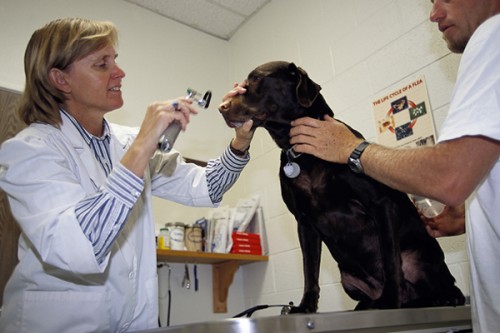
Veterinary Pet Insurance analyzed data from 500,000 insured cats and dogs over the previous year to find the top 10 medical conditions leading to a visit with a veterinarian.
The most common conditions in dogs:
Skin Allergies
Ear Infection
Chronic Kidney Disease
Skin Infection
Arthritis
Upset Stomach/Vomiting
Intestinal Upset/Diarrhea
Periodontitis/Dental Disease
Bladder or Urinary Tract Disease
Soft Tissue Trauma (Bruise or Contusion)
Is your dog plagued by itchy skin? VPI had more than 77,000 claims for dog skin allergies, with an average cost of $187 per dog and topped the chart as the most common reason for vet visits.
“To prevent some of the discomfort that so many pets experience from common diseases, the place to start would be by checking them regularly for developing problems,” says Carol McConnell, DVM, MBA, vice president and chief veterinary medical officer for VPI. “Many of the conditions on our Top 10 list each year can be stopped early or successfully managed in partnership with a veterinarian.”
VPI urges pet owners to familiarize themselves with their pets’ routine and behavior and schedule regular semiannual veterinary examinations to help prevent and identify medical conditions before they become serious or costly.





